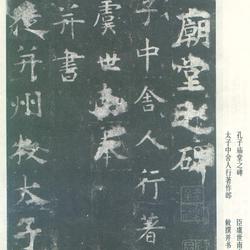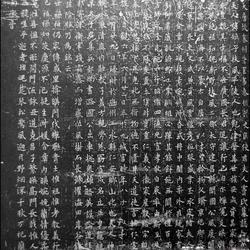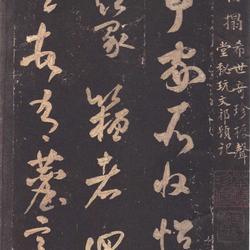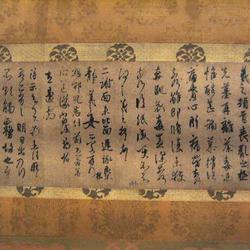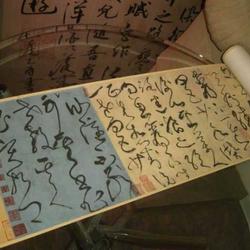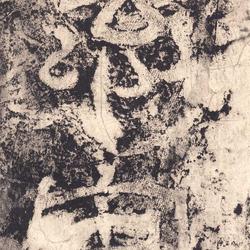Zhiyong's "The Thousand-Character Essay on True Grass"
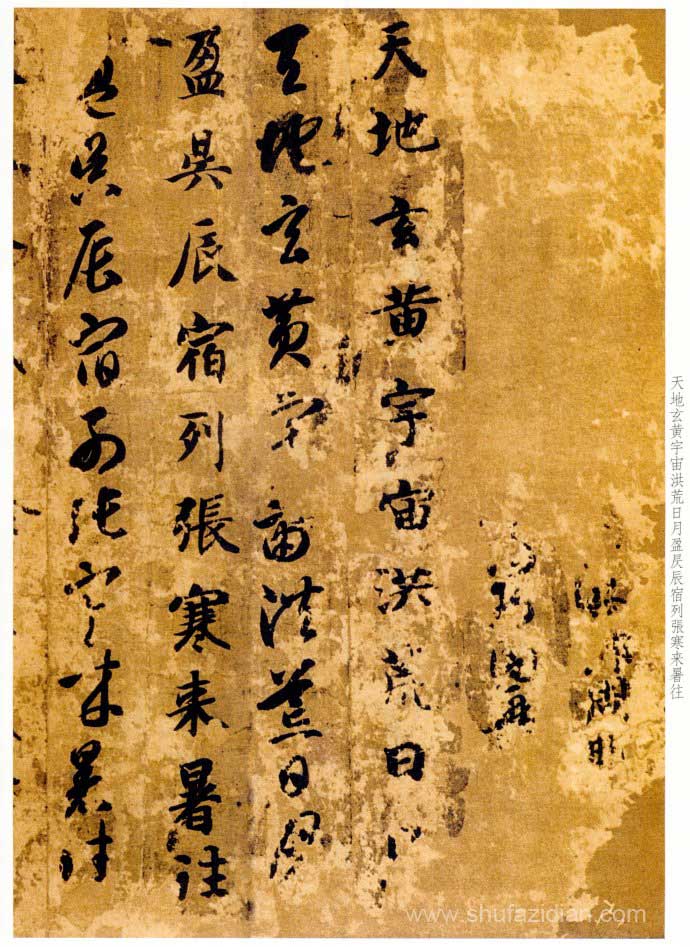
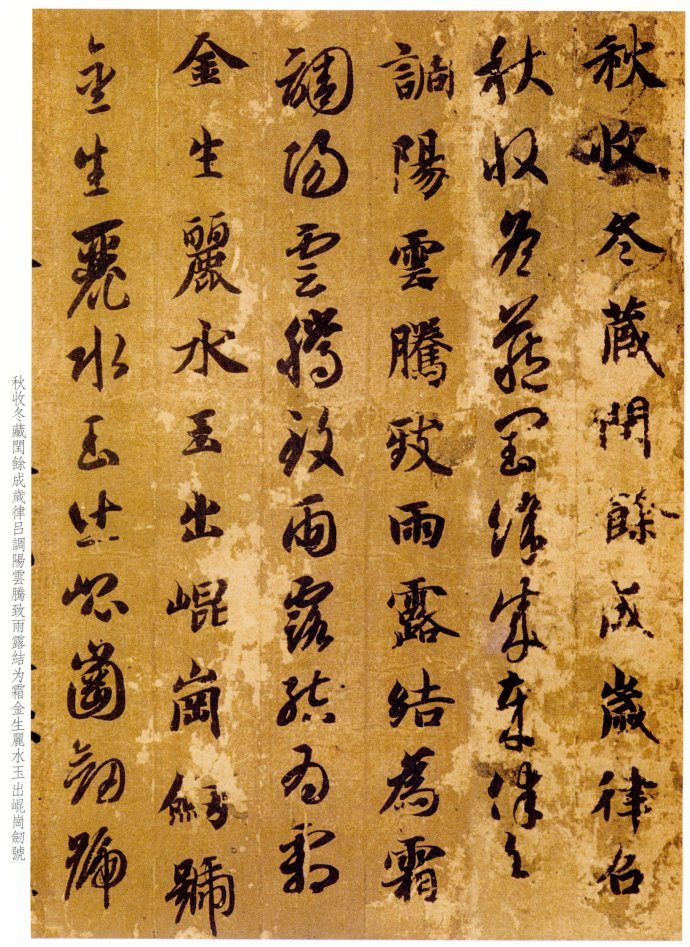
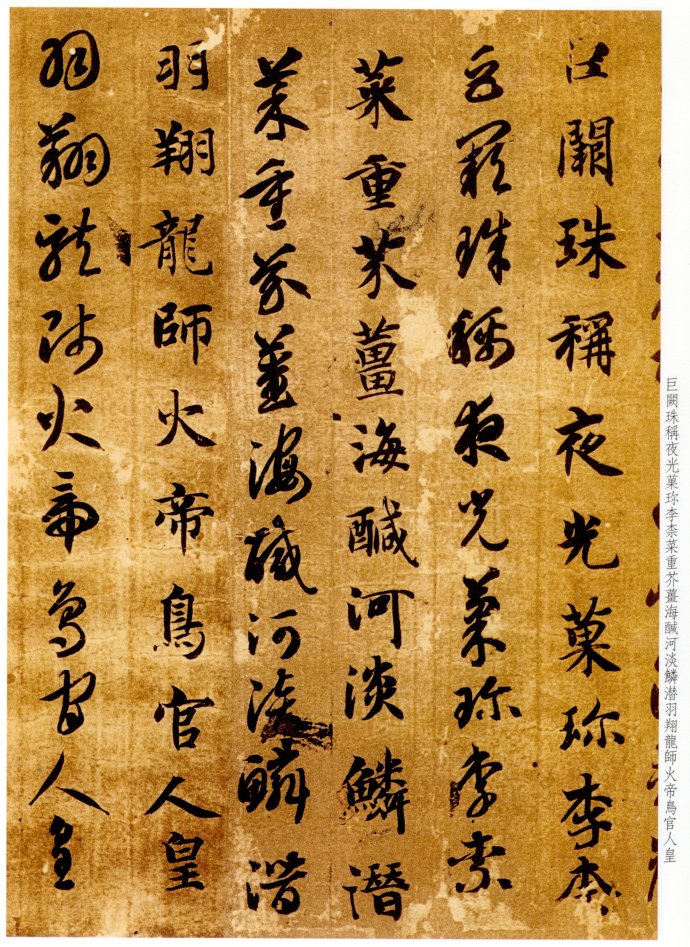
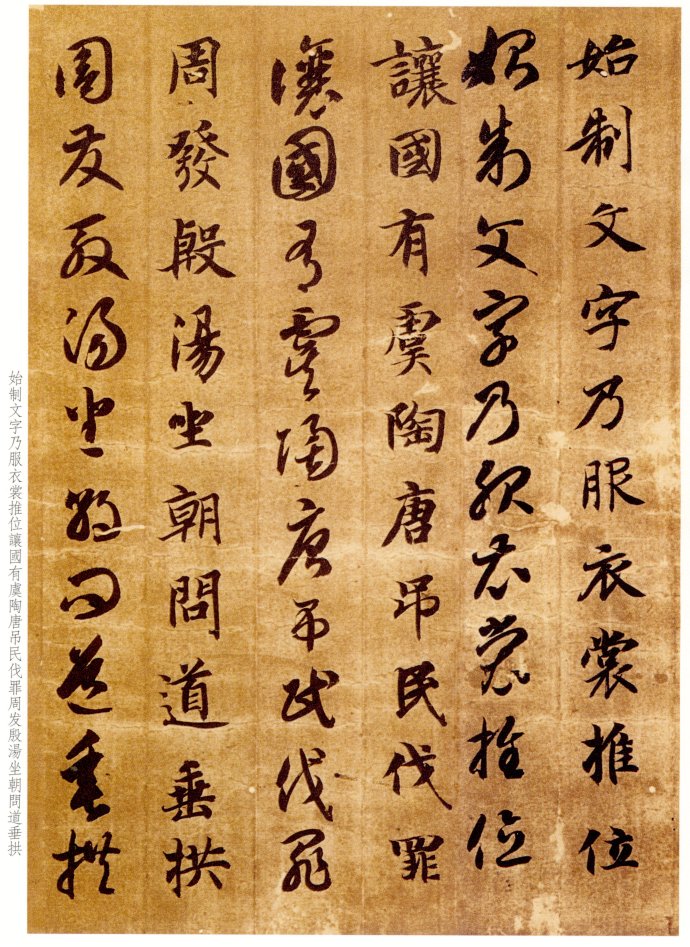
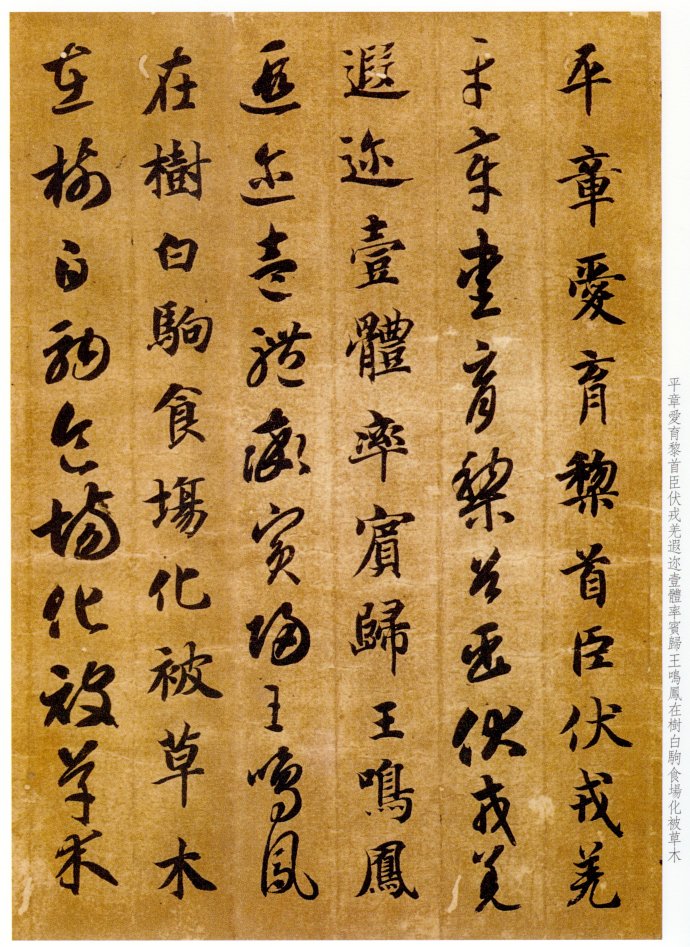
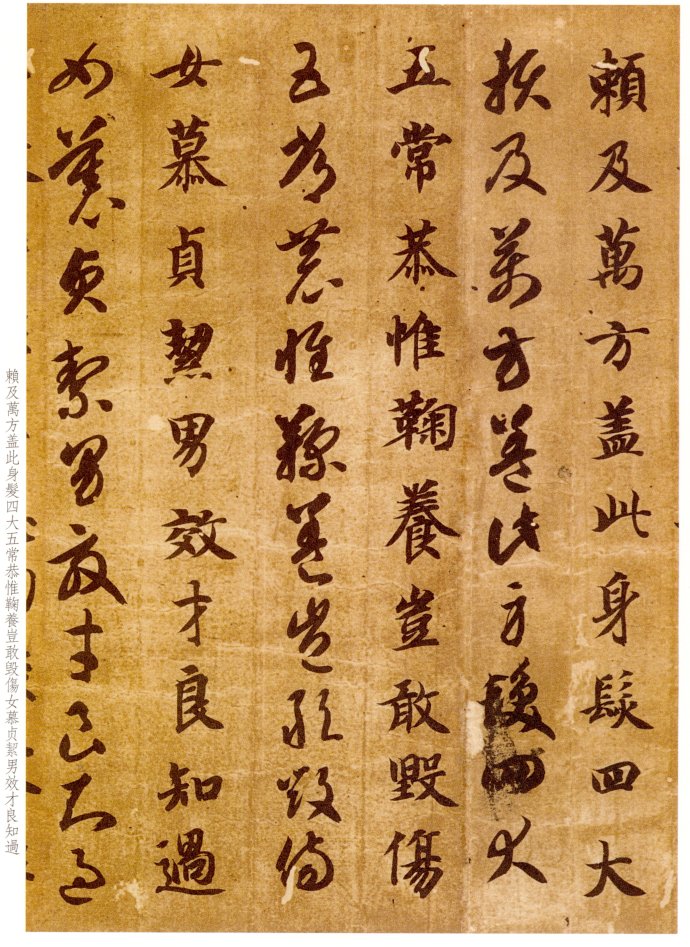
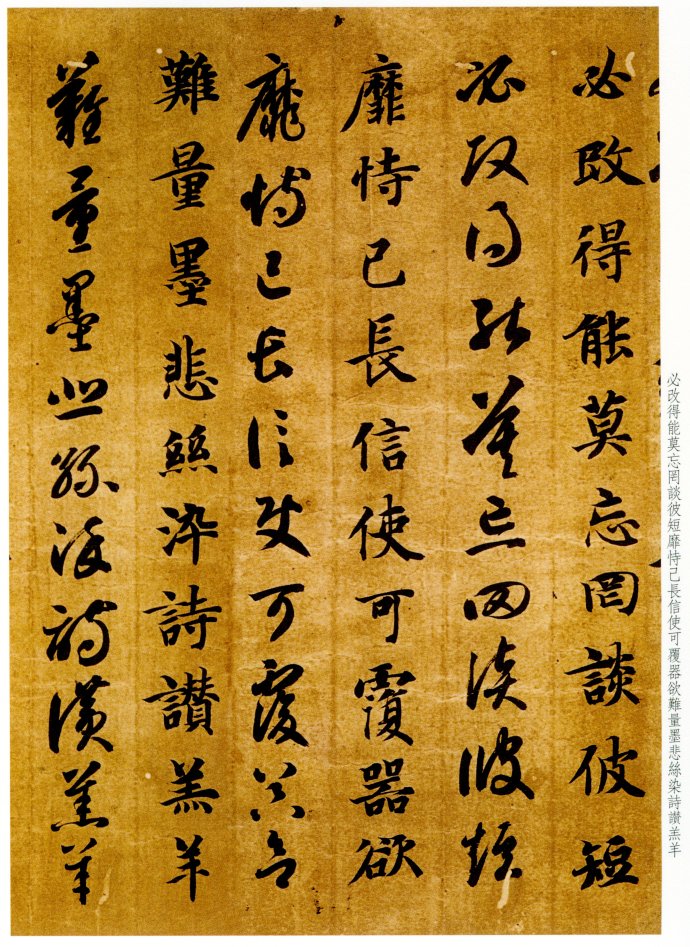
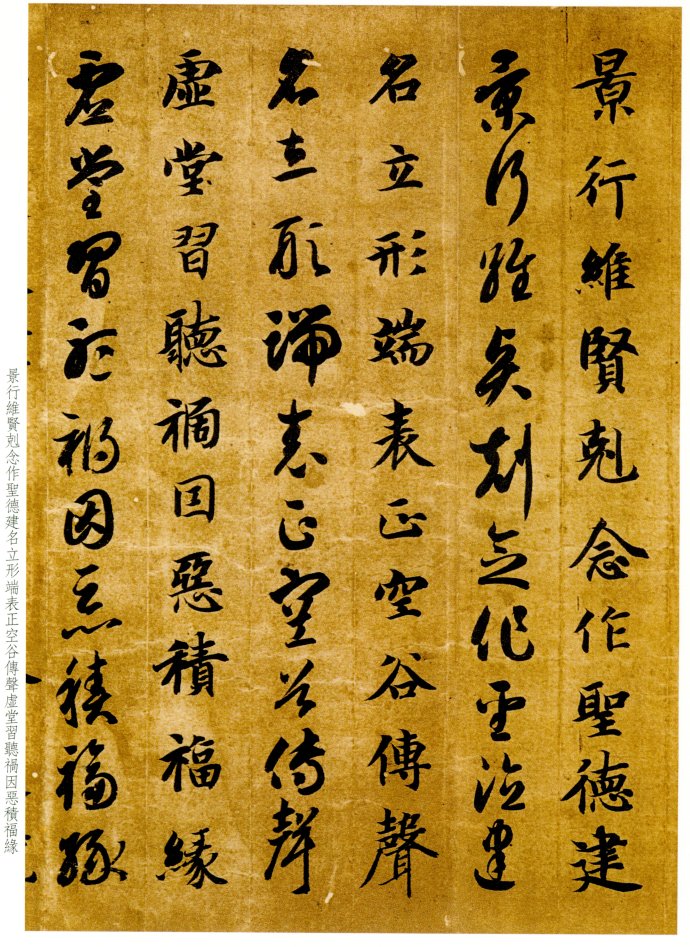
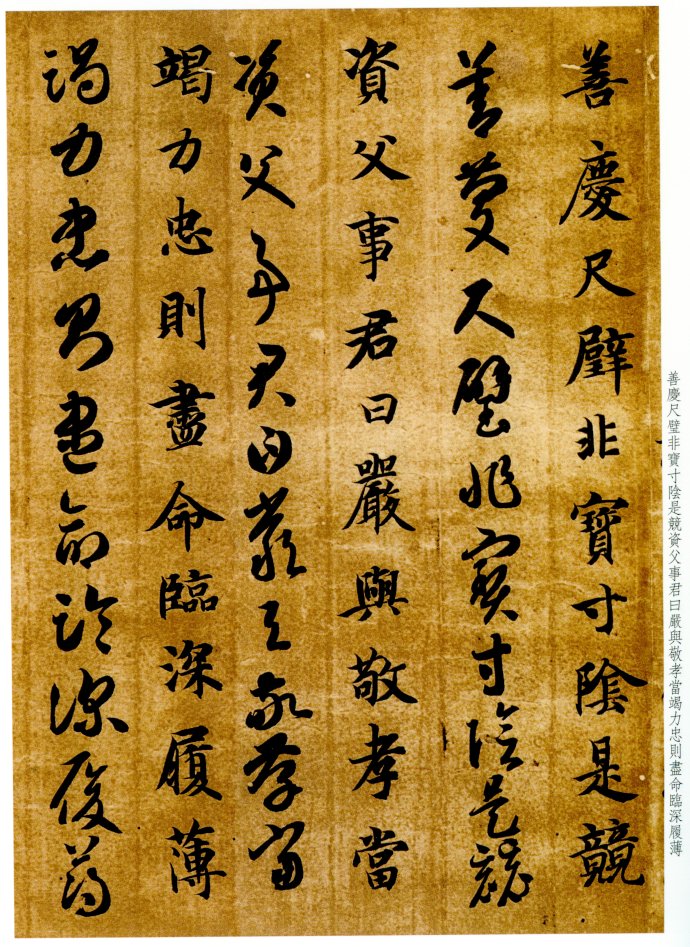
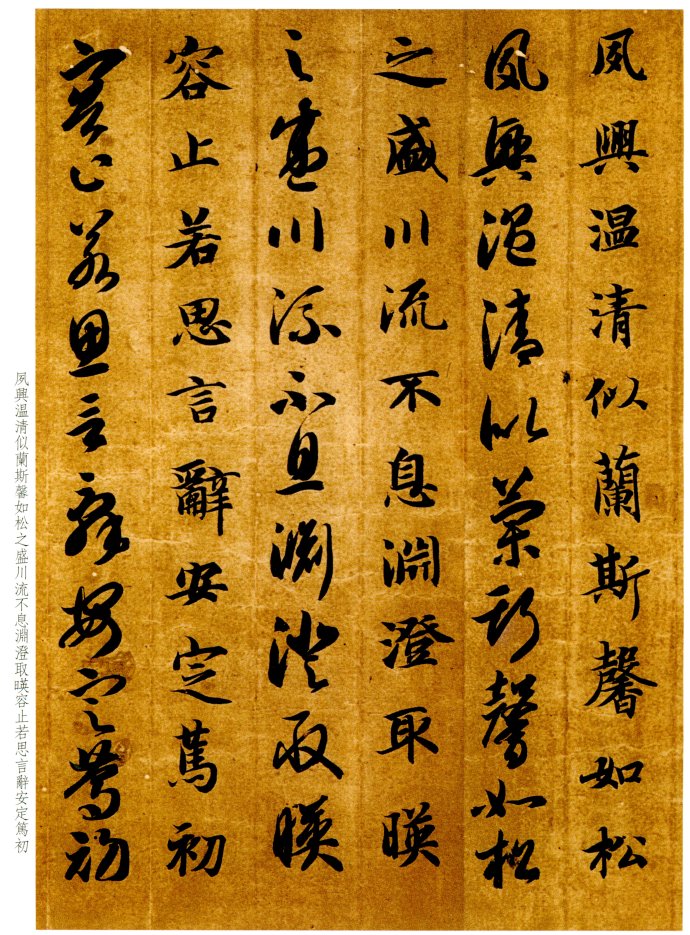
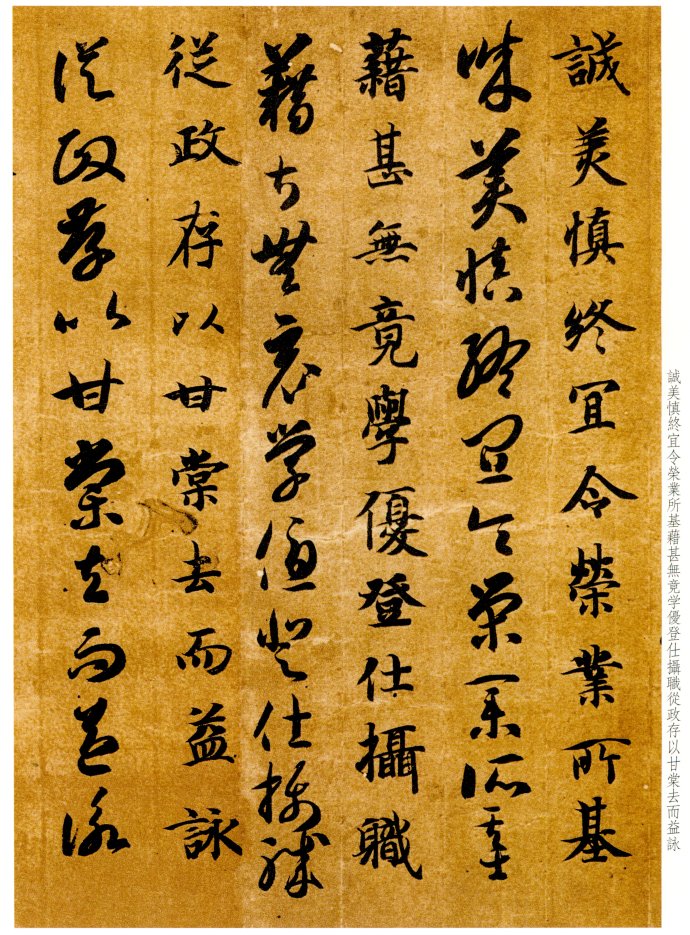
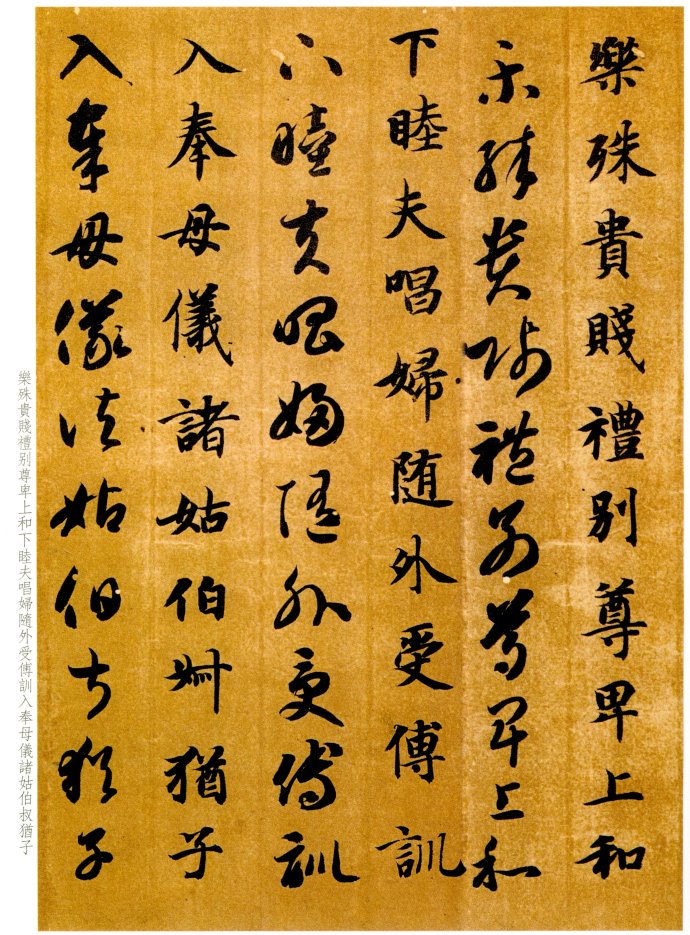
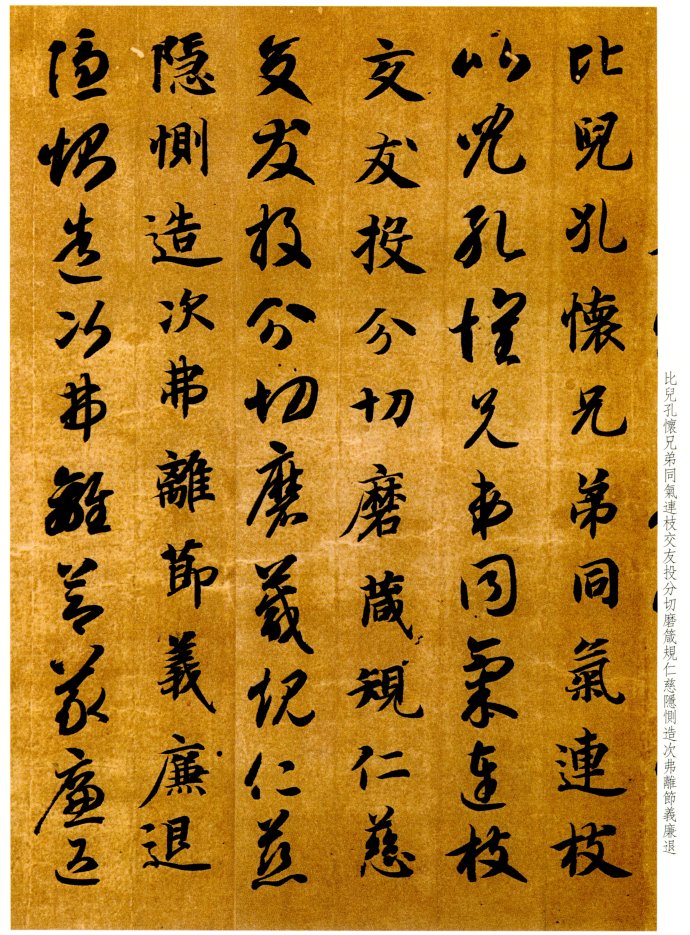
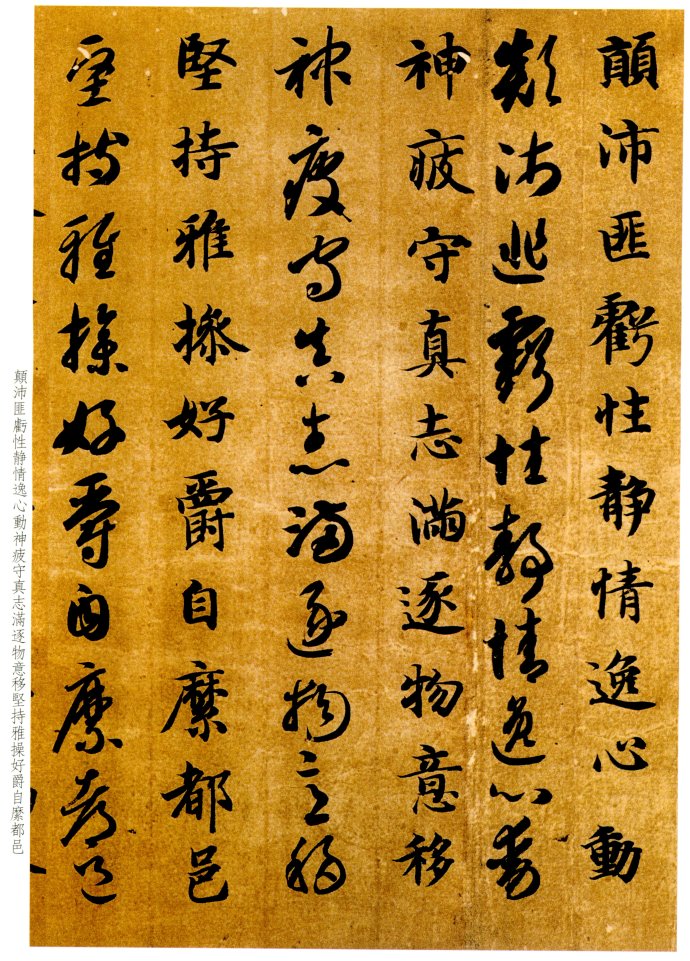
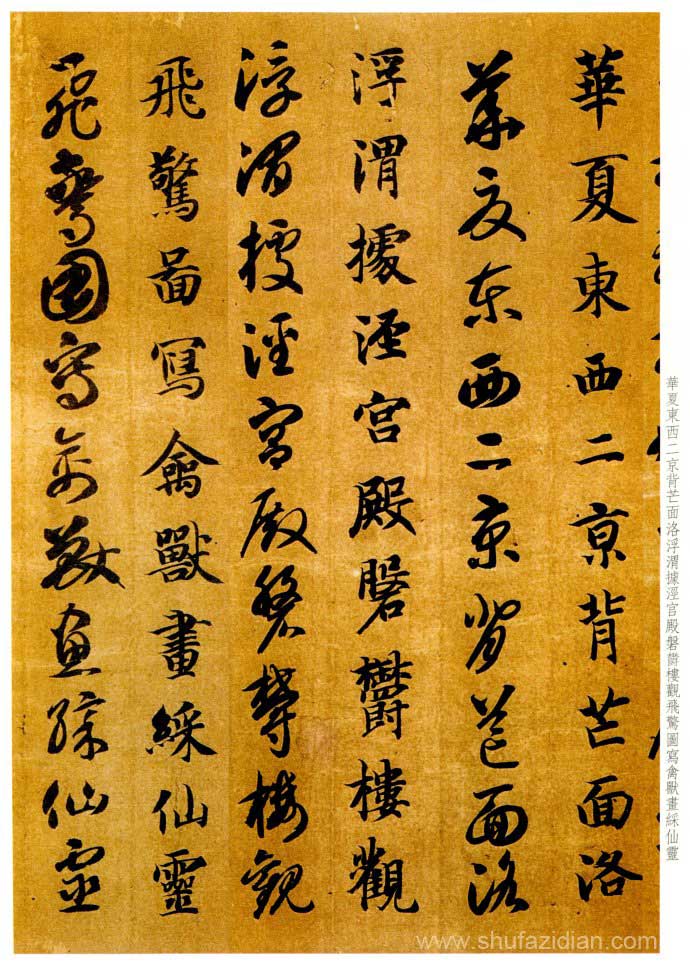
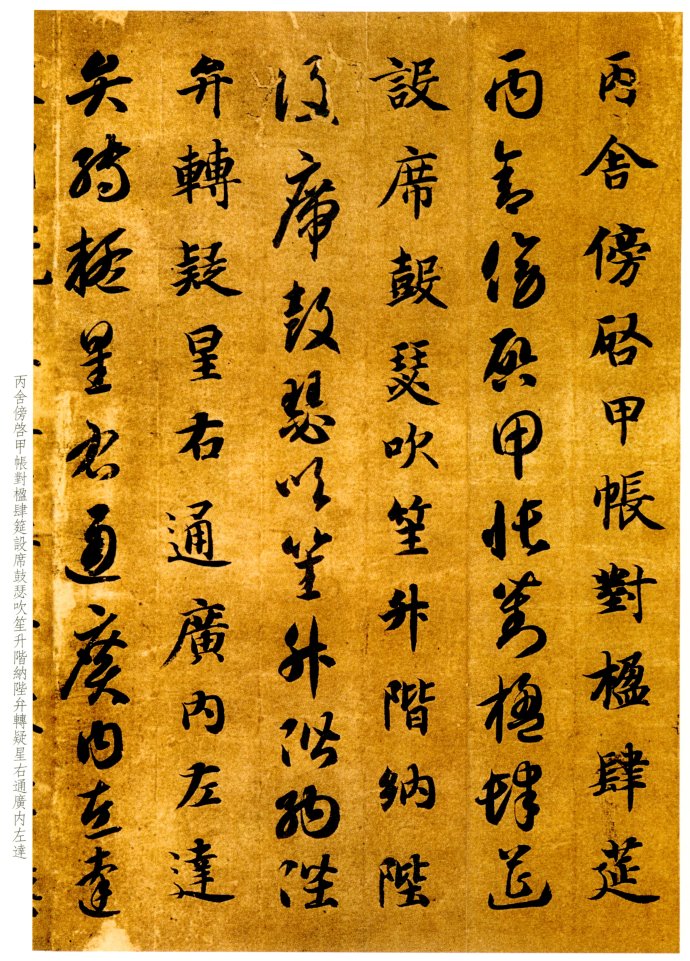
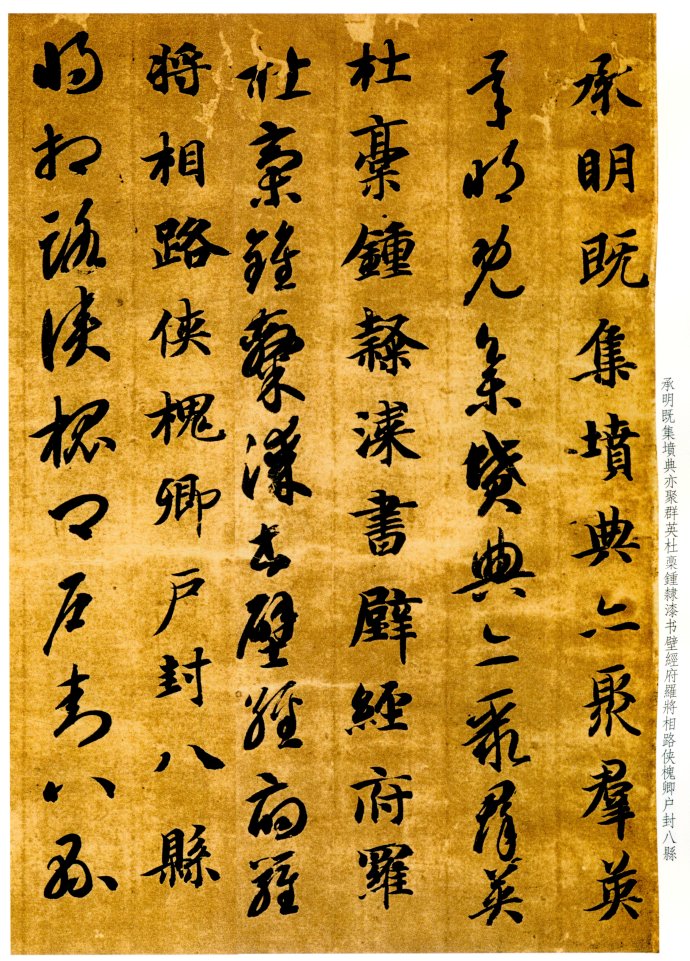
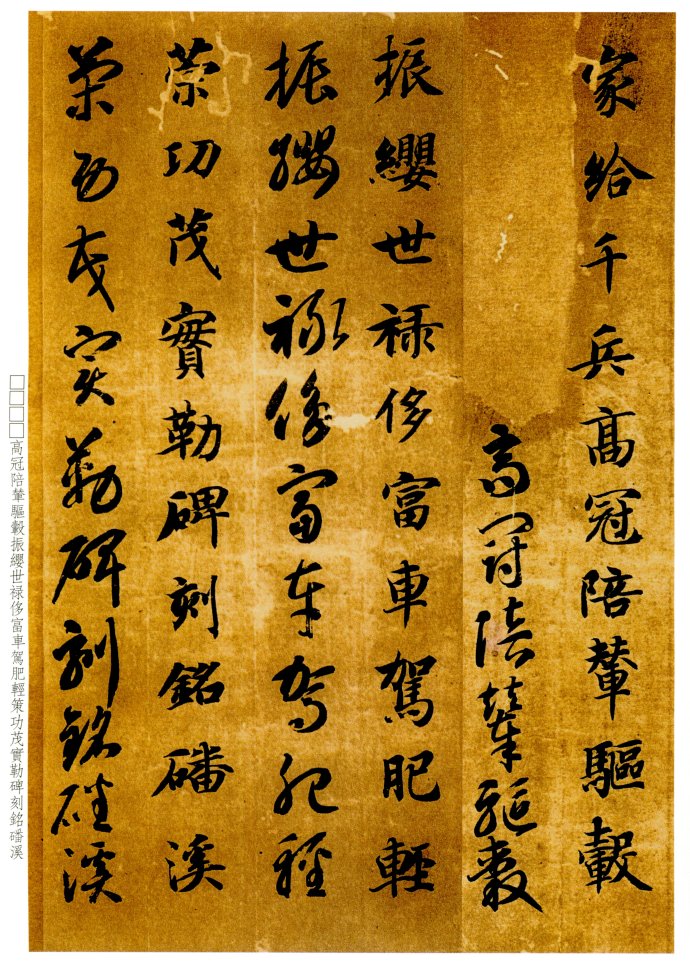
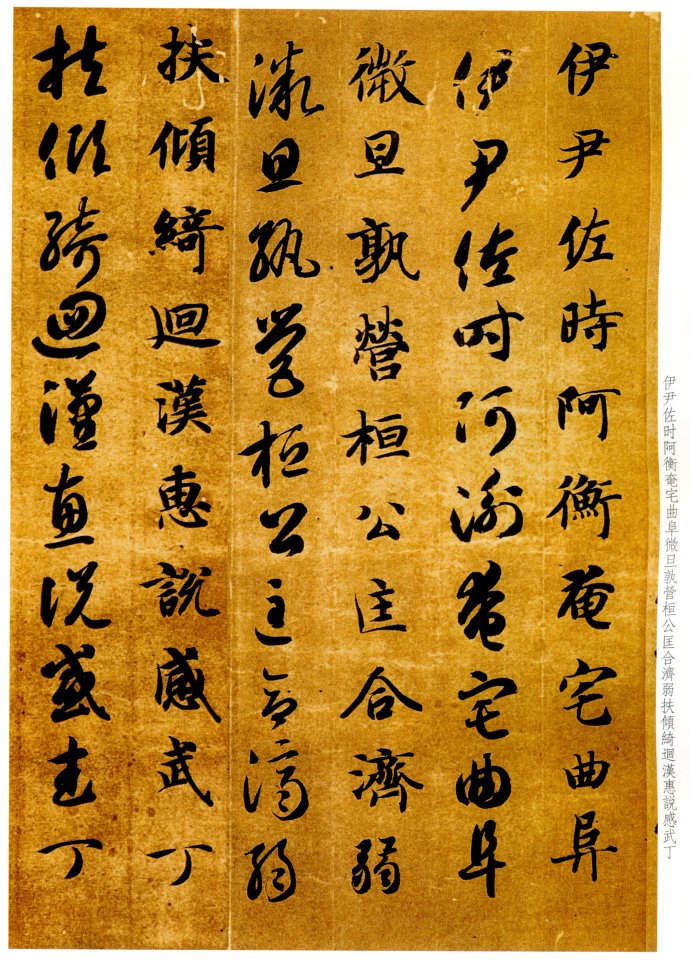
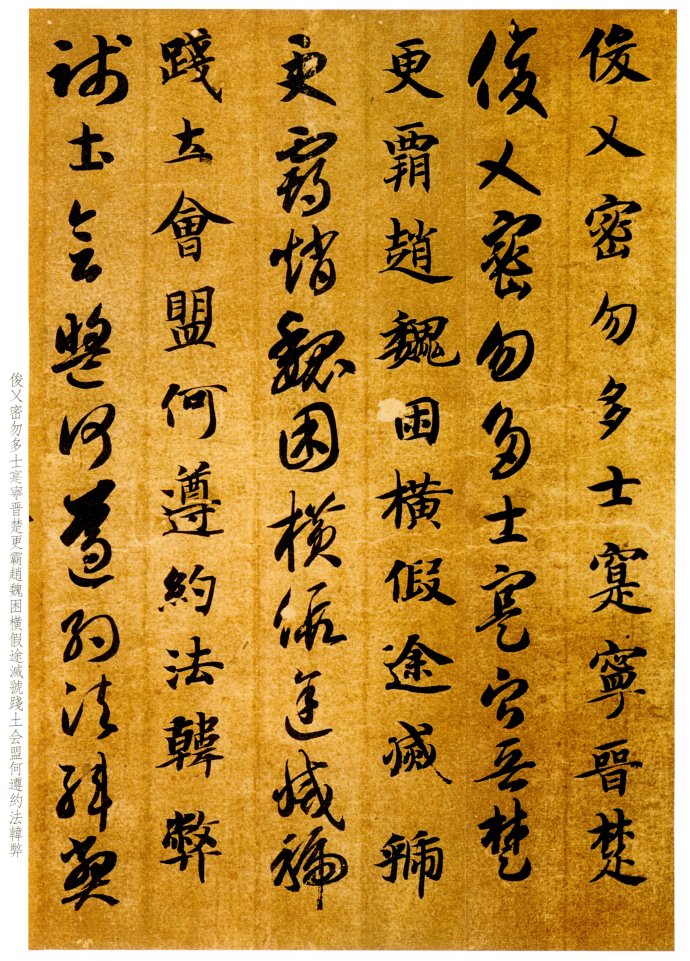
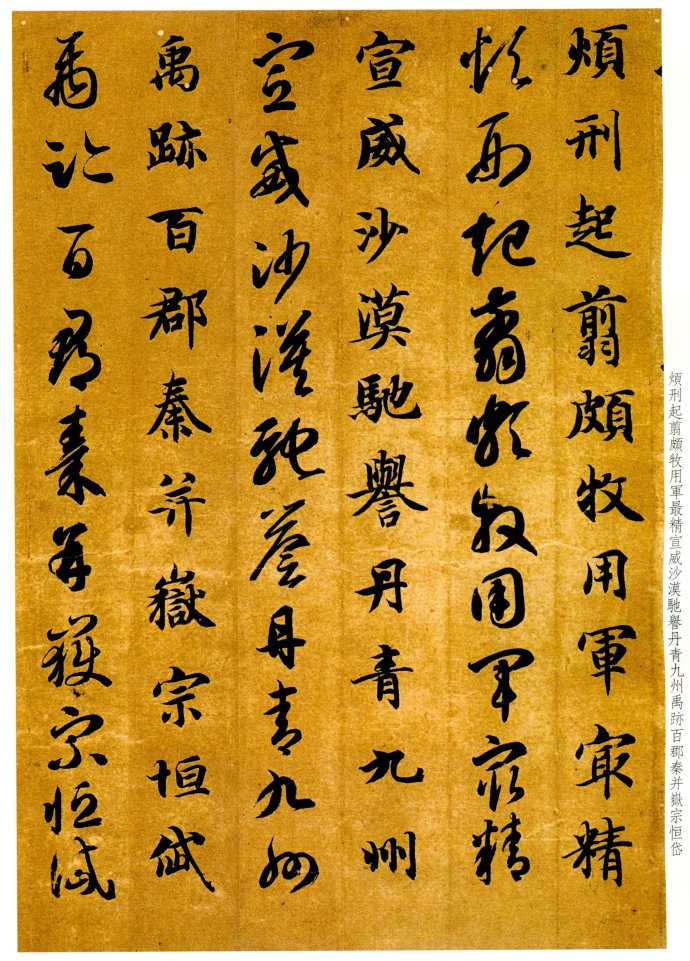
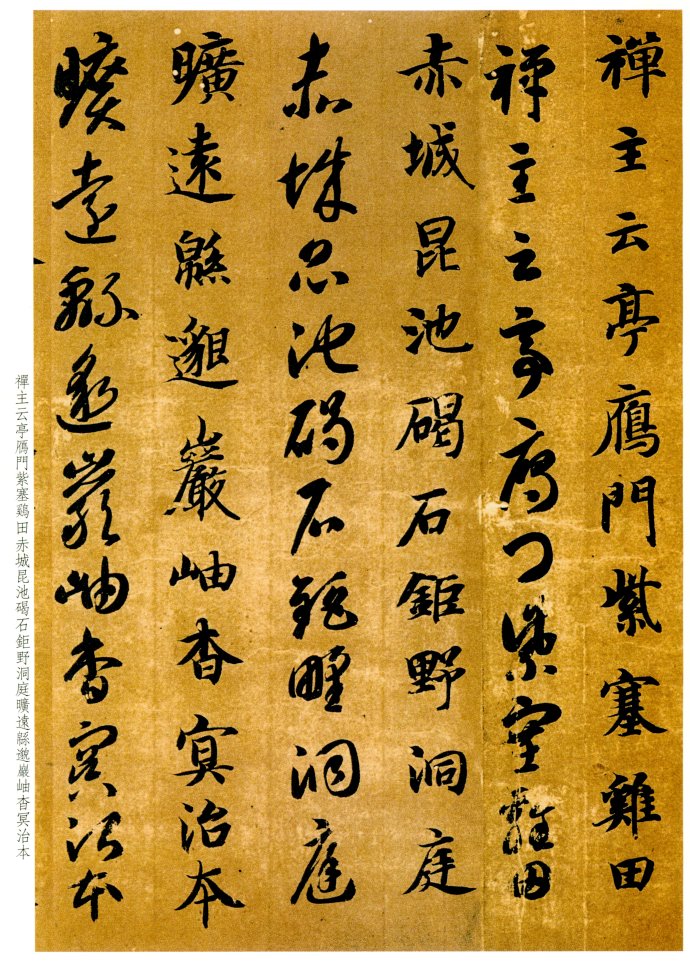
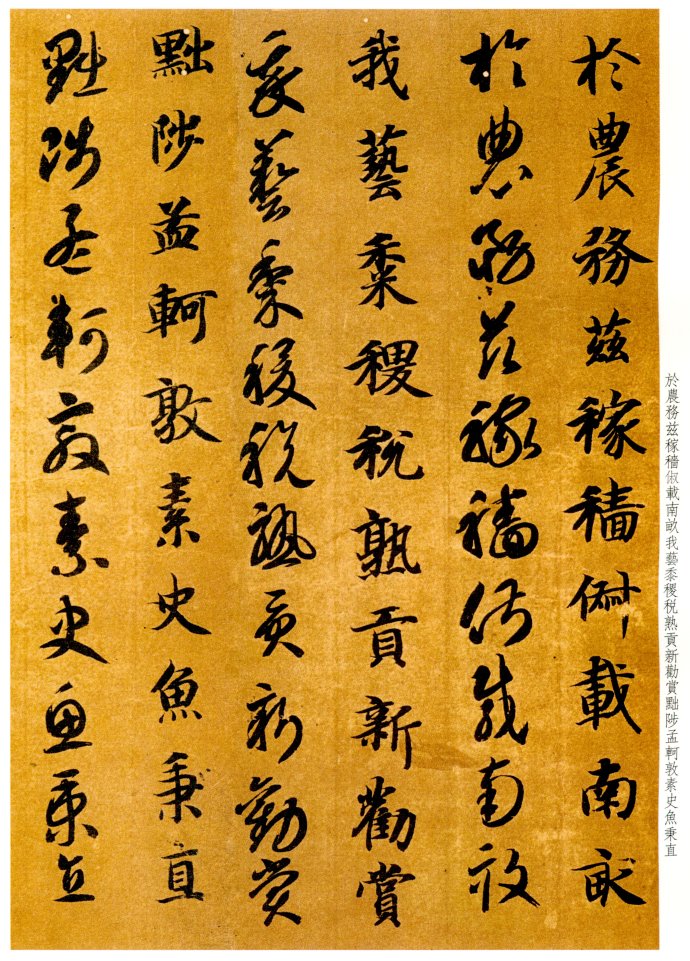
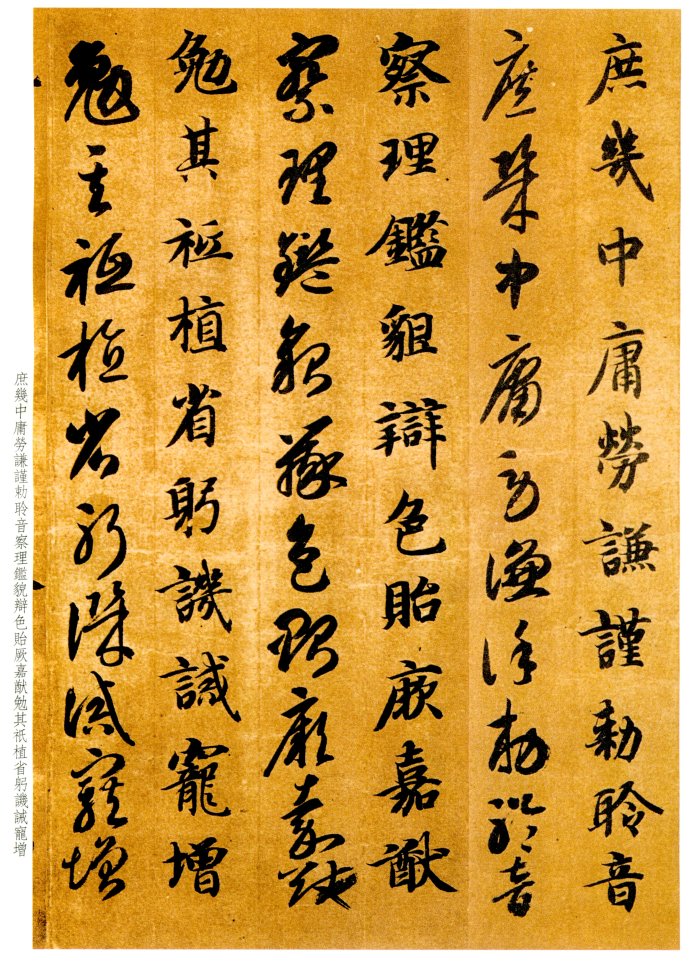
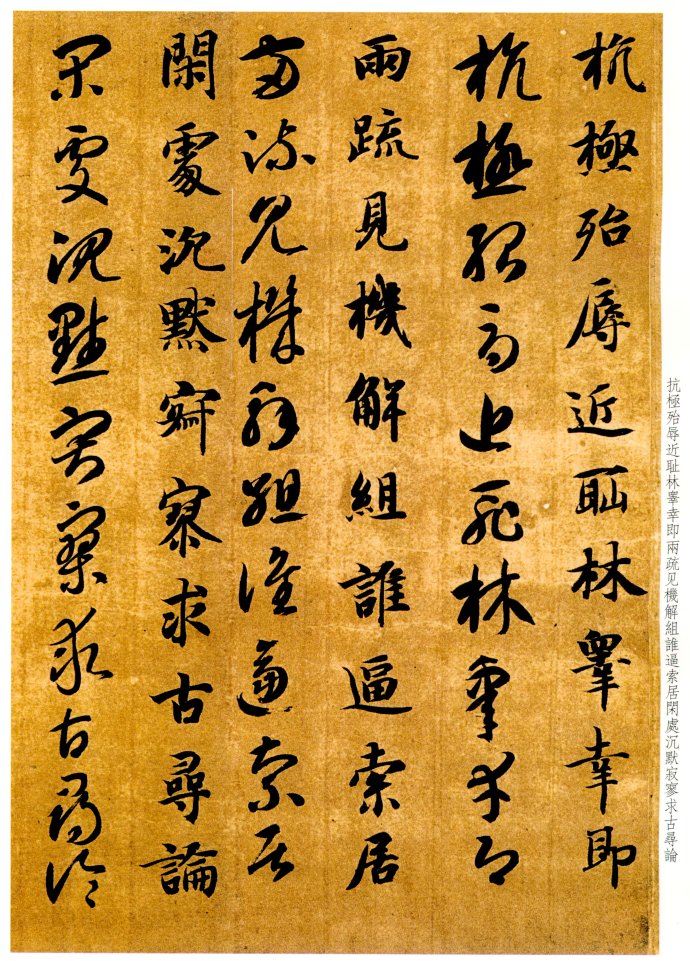
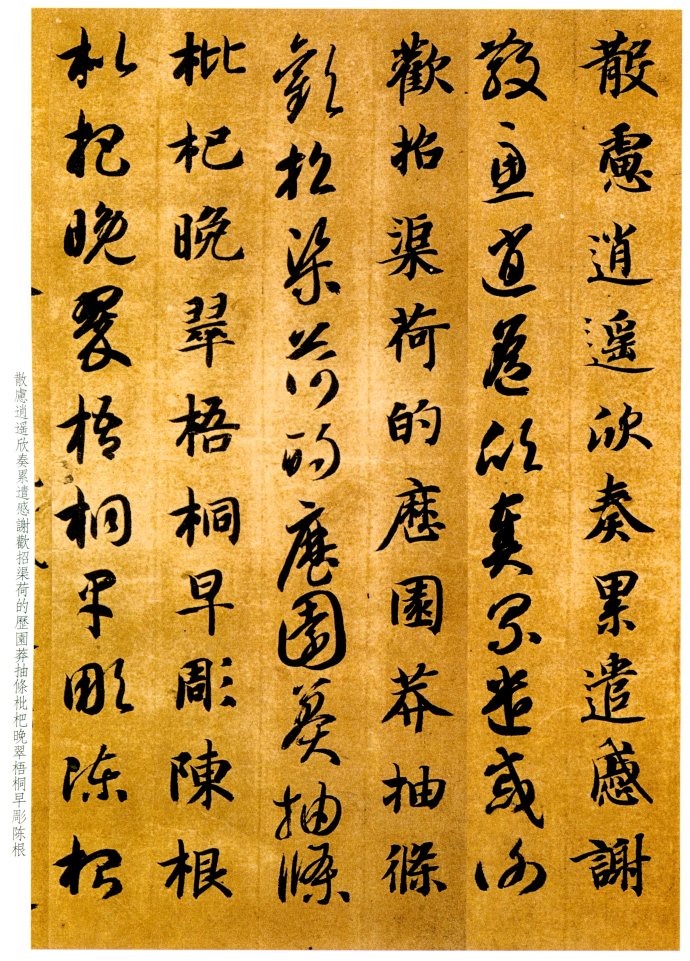
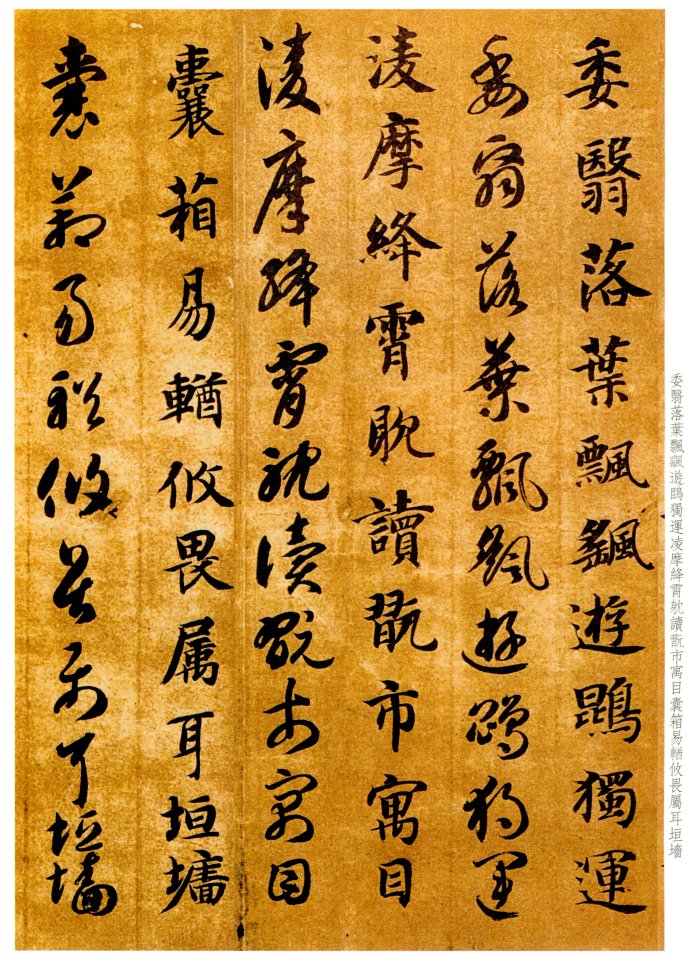
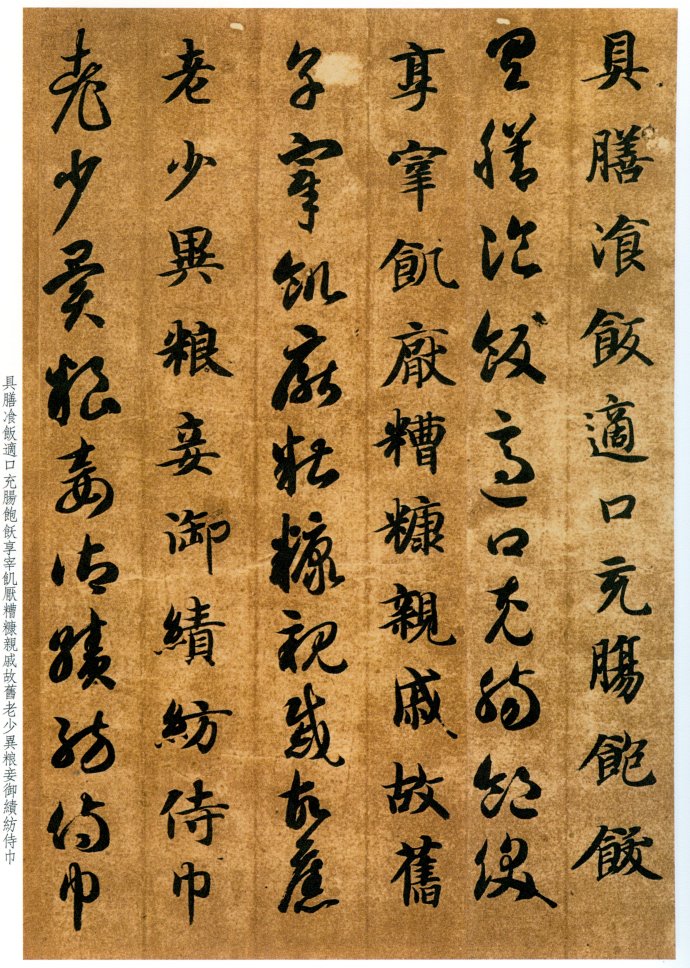
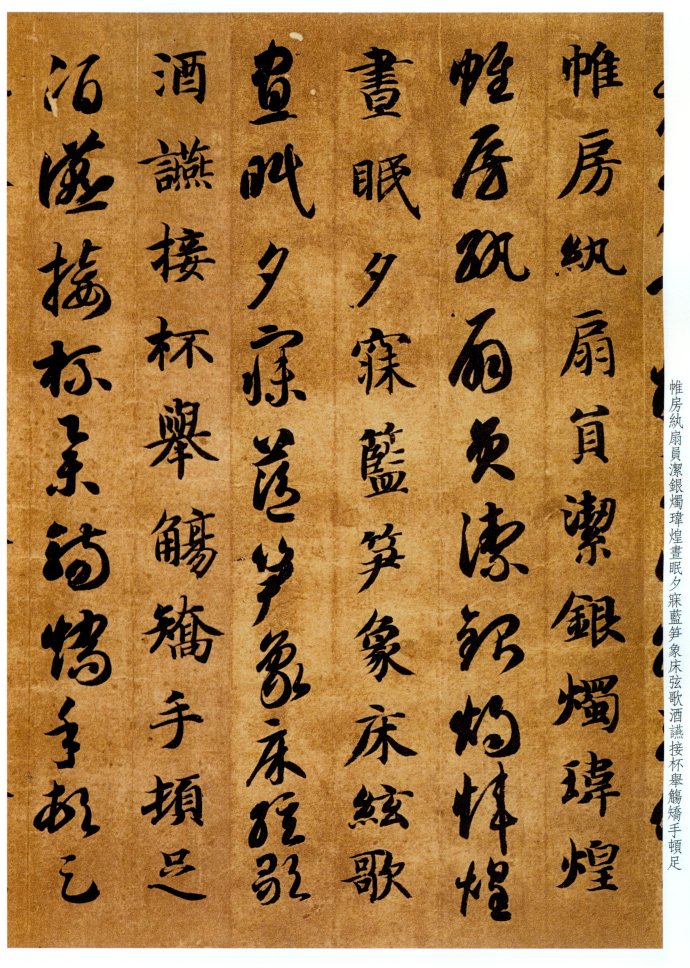
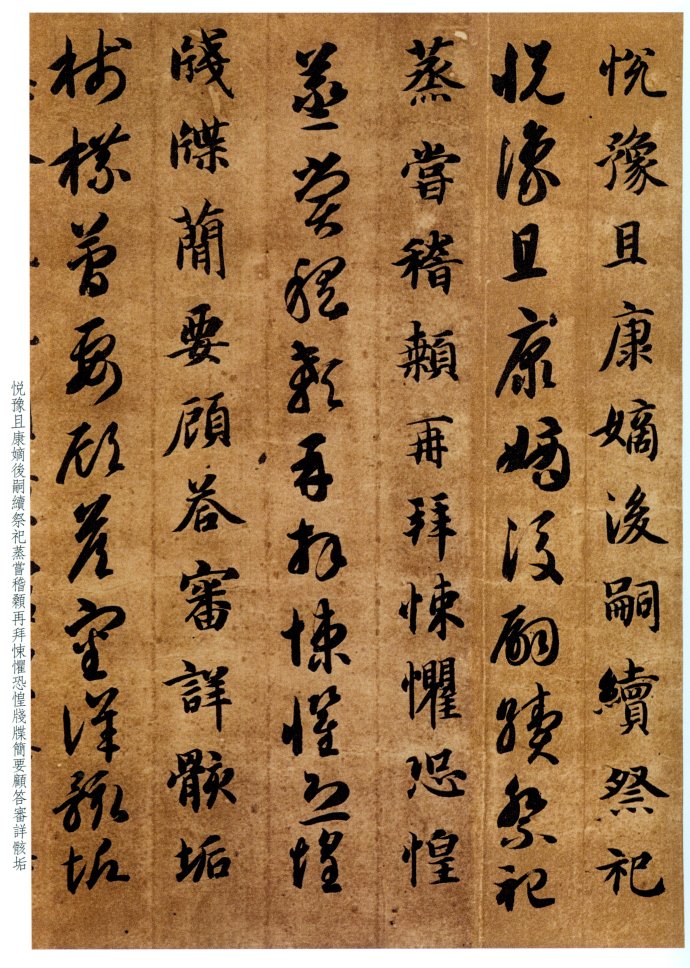
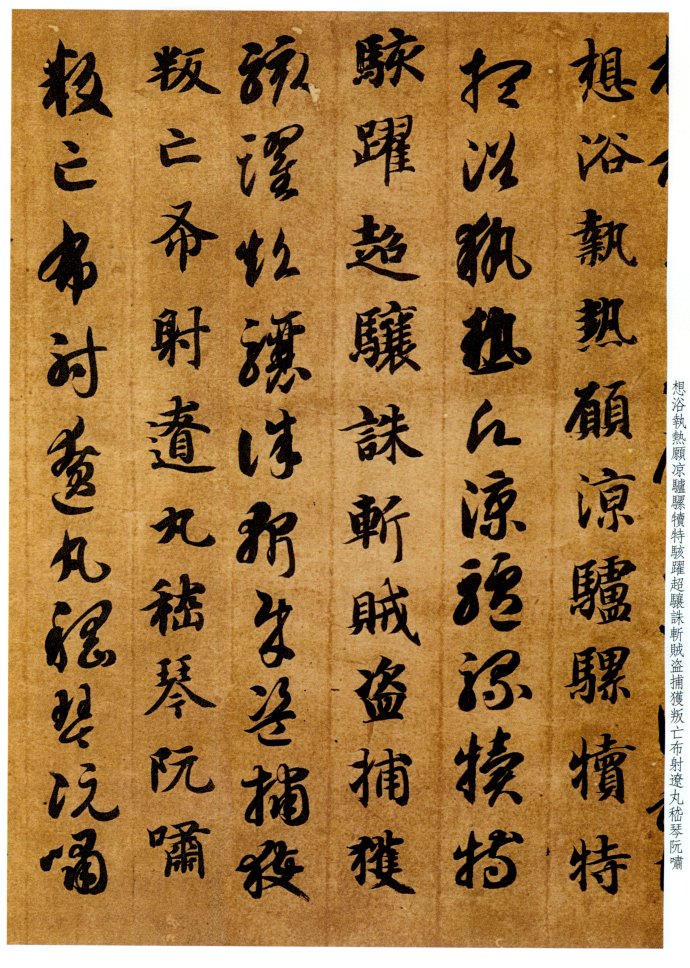
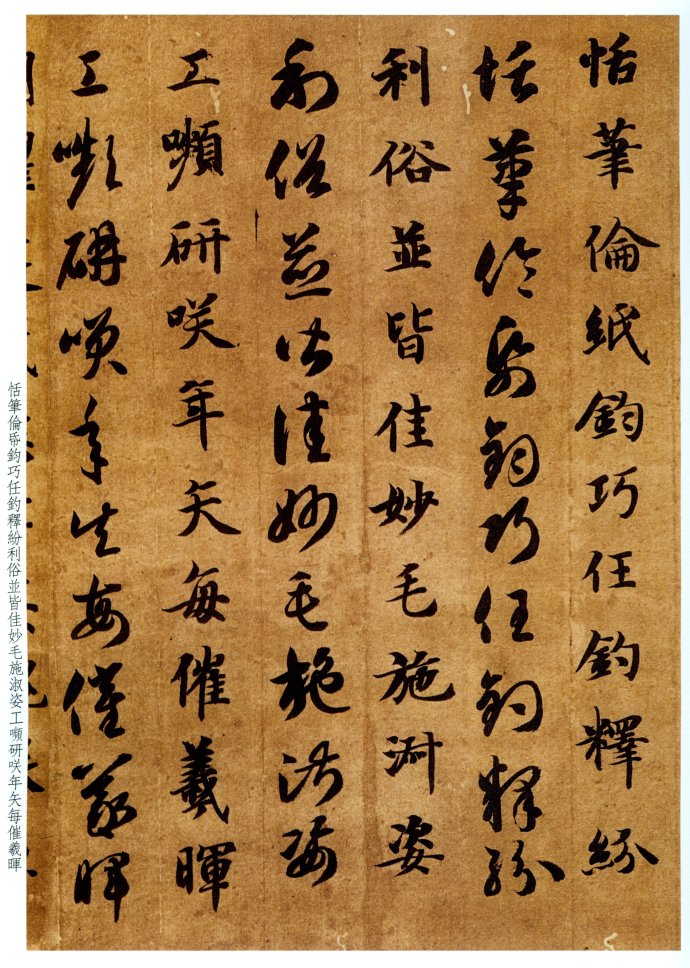
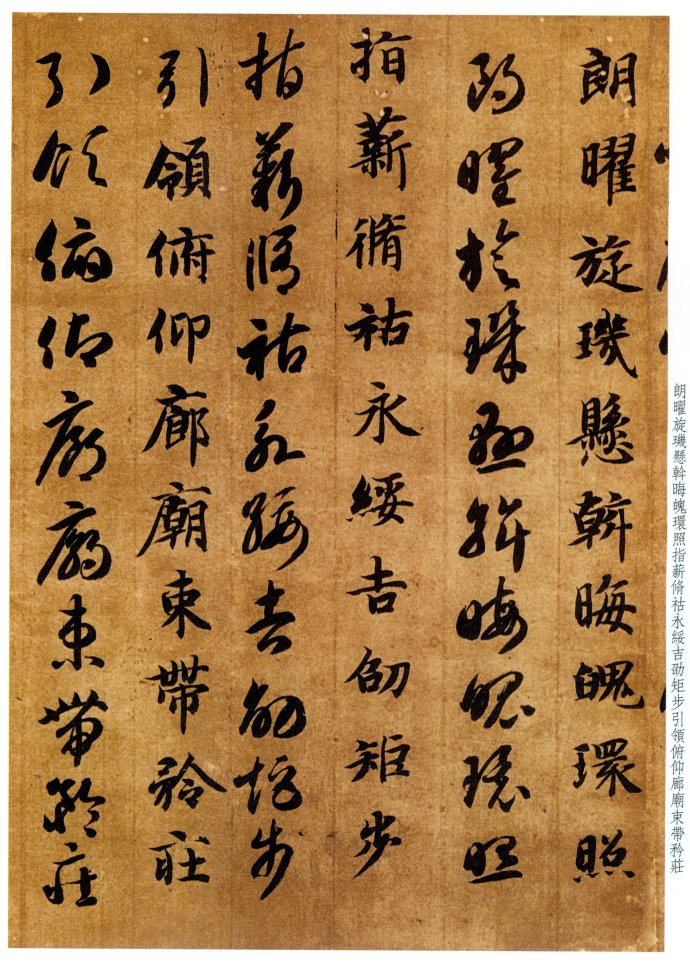
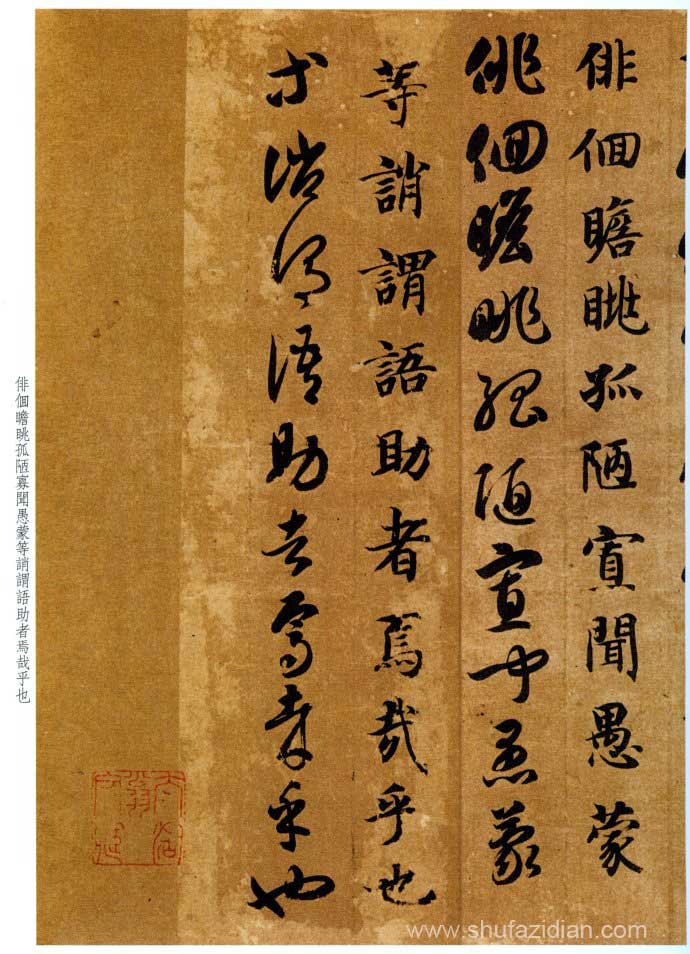
Ink copy of "Zhencao Thousand Character Essay" by Zhiyong (with postscript), each page is 29.3 × 14.2 cm. Private collection in Japan.
Zhiyong, whose birth and death dates are unknown, was a monk between the Chen and Sui Dynasties. His name was Faji and his surname was Wang. He was from Kuaiji. He was good at calligraphy, especially cursive script. He is the seventh grandson of Wang Xizhi and the queen of Huizhi, the fifth son of Wang Xizhi. A monk from Yongxin Temple in Shanyin (now Shaoxing, Zhejiang), he is known as "Yong Zen Master". He often lives in Yongxing Temple Pavilion and studies calligraphy near the pond. Studying behind closed doors for thirty years. He first learned calligraphy from Xiao Ziyun, and later took his ancestor Wang Xizhi as his sect and studied calligraphy for 30 years in the pavilion of Yongxin Temple. Zhi Yongmiao passed down the family method and was very energetic. Few calligraphers in the Sui and Tang Dynasties came to study. A hundred years old is the end. Zhiguo, Biancai, and Yu Shinan all have excellent calligraphy skills in Zhiyong.
There are more than 800 copies of Chiyong's "Thousand-Character Essay on True Grass", and there are two copies of "Thousand-Character Essay on True Grass" handed down by Chiyong. One is an ink-printed version introduced to Japan in the Tang Dynasty, and the other is a stone-engraved version of Dong Xue Sichang of the Northern Song Dynasty preserved in the Forest of Steles in Xi'an, Shaanxi Province. As early as the Tang Dynasty, this volume had been spread to Japan in the east along with the converted monks and envoys sent to the Tang Dynasty, and had a great influence on Japanese calligraphy. The rest of the people in China were all reduced to ashes after the Southern Song Dynasty. Only the stone engraving of Xue Sichang from the 3rd year of Daguan in the Northern Song Dynasty (1109) is preserved in the Forest of Steles in Xi'an. Although it is said to be "extremely finely crafted and has no regrets", it can be called a rare book, but compared with the ink stains, its sharpness and turn are much more ambiguous. In contrast, the weight of the stone carvings changes little, and the center and side of the pen are unclear, vague and not sharp. It can be seen that Mi Fu's "stone carvings cannot be learned" is reasonable.
"The Thousand-Character Essay on Zhencao" has only seven volumes left in Xuanhe Neifu during the Northern Song Dynasty, and only one volume exists today in the Southern Song Dynasty. The ink in the "Zhencao Thousand Character Essay" that has been handed down is only broken in the first two lines, and the rest is still intact; as for the missing parts, it has been completed according to the Guanzhong edition. The so-called "Guanzhong version" was made by Xue Sichang in the third year of Daguan in the Song Dynasty based on the authentic works collected by the Cui family in Chang'an. He made a copy of the stone in Daguan Jichou (1109 AD). It is also called the "Shaanxi version". The original stone still exists in the Forest of Steles in Xi'an today. , it is said that it is "extremely finely crafted and will never leave any regrets." It can be said to be a rare book, but it feels slightly inferior to the ink mark.
After the ink writing on Zhiyong's "Zhencao Thousand-Character Essay" was recovered, many scholars were not sure it was authentic. To be on the safe side, it is said to be a "Tang copy". Mr. Qi Gong once received the original version of the concept at Ogawa's house in Kyoto in April 1989. In his "Thousand-Character Essay", he added: "(paper color) cover Dunhuang on a thin hard yellow paper that was presented when mounted in water." This color. Whenever the characters are written with heavy ink marks, there are often ink accumulations like grains of millet. When reflected obliquely by the window light, there is still an inner bright color. It can be seen that they are definitely not traces of outline." The teacher used the early Tang Dynasty version to prove that this is one of the 800 copies. There is also a poem that goes: "Eight hundred copies of Yongshi's original works, Haidong is a volume of ashes. Children meet each other but don't know each other, young people leave home and old people return."
In 1912, Japan's Ogawa Taijiro printed an ink-printed photoprint obtained by him. Naito Tora concluded that this was the so-called "Takuo Hoshi's Book" and the "Two Hundred and Three Lines of Shinso Thousand-Character Essay". In the eighth year of Tianping Shengbao (corresponding to the first year of Emperor Suzong's reign in the Tang Dynasty), after the death of Emperor Shomu of Japan, his queen Fujiwara Mitsuko dedicated his relics to the Lucena Buddha of Todaiji Temple. The "Devotion Account" among the relics includes this Volume, now converted into volumes. Each page is 29.3 cm high and 14.2 cm wide. In Guangxu Xinsi (1881), Yang Shoujing referred to it as Zhiyong Shu in his postscript.
Commentary on Zhiyong’s Past Dynasties——
Emperor Yang of the Sui Dynasty said: "Zhiyong gets the meat of the right army, and Zhiguo gets the bones of the right army."
Zhang Huaiguan's "Shujuan" says: "Wisdom is always the ancestor of Yi Shao, who specializes in chronicling, takes photos and rises to the hall, the real grass is life-oriented, the barbaric road retreats, and the sea flows peacefully. There is still the wind of Dao (Zhang Zhi) in the slightest, half The meat of Youjun can be used in all body types, and it is the best in grass. The temperament is lower than that of Ou and Yu, and the ripeness is better than that of sheep and thin."
Mi Fu said: "Seng Zhiyong's book, although the Qi and bones are clear and healthy, the size and size are mixed, just like the noble nature of the fourteenth and fifth nobles, just follow the rope and ink, and suddenly go beyond the rules."
Su Shi's "Dongpo Inscriptions and Postscripts" says: "Yong Zen Master's writings have a deep and stable character, a body that is both wonderful and refined, and yet it is sparse in its creation. Just like watching Tao Pengze's poems, they seem to be loose and slow at the beginning, and they are repeated endlessly, and then you can recognize them. Interesting."
Dong Qichang's "Essays on Painting a Zen Room" says: "Master Yong imitated Zhong Yuanchang's "Declaration Table". Every time he used the pen, he must twist and turn, and the two directions of Zhi Yong's thousand-character essay (53 pictures) were calm and collected. The so-called When the writing is about to penetrate the back of the paper, this method gradually disappeared after the Tang Dynasty."
Ming Jiejin's "Chun Yu Miscellanies" said: "There is no good calligrapher in the world because of self-righteousness and devotion. But Zhi Yong was able to lay down his family's skills, and calligraphy was revived and flourished in the Tang Dynasty."
He Shaoji of the Qing Dynasty once said in his "Dongzhou Cottage Jinshi Postscript": "Zhiyong's "Thousand Wen", the pens fall from the air, and the people live from the air. Although the leakage marks in the house are still indescribable."
The Qing Dynasty Feng Ban's "Buyin Shu Yao" said: "Today's printed version of "Huang Ting" (Wang Xizhi's "Huang Ting Jing" in small regular script) is mostly wrong, but it is a pity that the original is not seen. "Thousands of Wen" can only be obtained by looking at it."
Du Mu's "Yuyi Pian" commented on its writing: ""Zhiyong Zhencao Thousand Character Essay" is true, with flying charm, and is of divine quality. It is the best Dharma book in the world."
The Dunhuang Stone Chamber Fragments of "Zhiyong Zhencao Thousand-Character Essay" by Jiang Shanjin in the Tang Dynasty
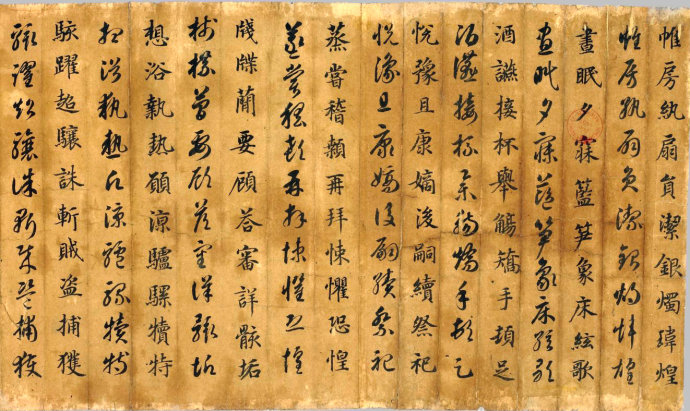
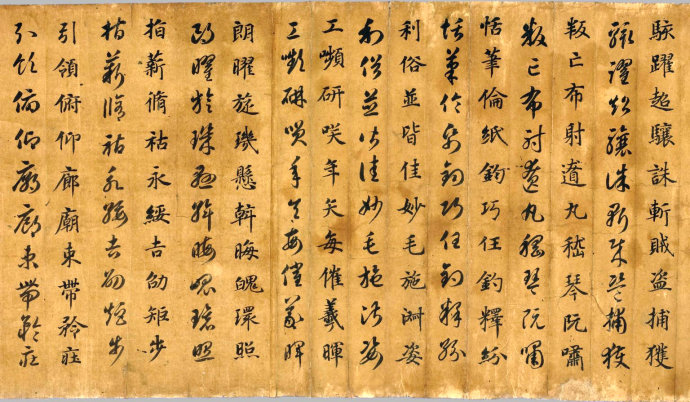
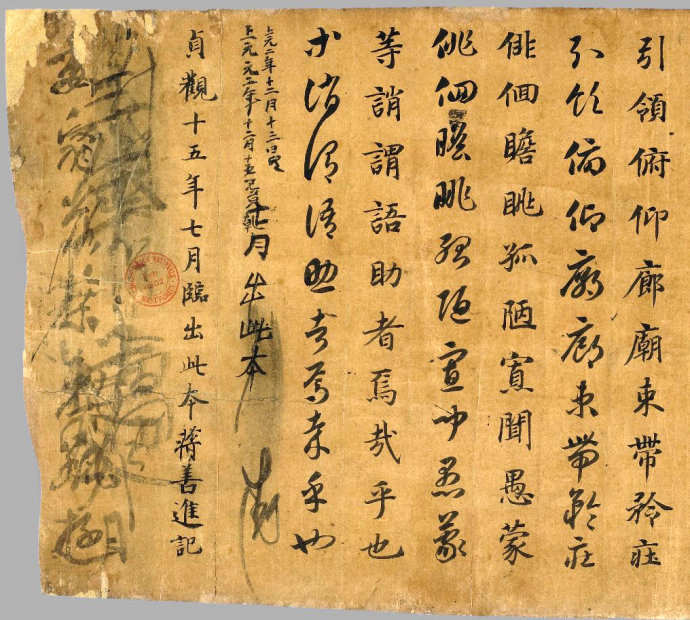
The Dunhuang stone chamber fragments of "Zhiyong Zhencao Thousand Character Essay" written by Jiang Shanjin in the Tang Dynasty. Collection of the National Library of France.
This copy of "The Thousand-Character Essay on True Grass" was produced in a Dunhuang stone chamber and is now in the National Library of France. The picture is divided into three sections, the first section is 20 cm, the second section is 42.5 cm, and the third section is 38 cm-39 cm, the color is uniform and dark ocher, the size of the whole volume is about 25 cm × 101 cm, and contains thirty-four lines. The writing content is very similar to the handed down "Zhiyong Thousand-Character Classic" engraving, which is considered to be the earliest and oldest one discovered so far. The most successful copy.
The regular script of "Zhiyong's Thousand-Character Essay" is harmonious and handsome, and the cursive script is smooth and round, yet smooth and standard. It is deeply rooted in Zhiyong's three tastes. The title of this writing is "This book was published in July of the fifteenth year of Zhenguan, and Jiang Shanjin recorded it." This title is in regular script, which is consistent with the original meaning. Judging from its rigorous structure, it is exactly what Tang Jingsheng came to. Documents record that Zhiyong wrote 800 copies of the "Thousand-Character Essay" and distributed it to various temples in eastern Zhejiang. It spread widely at one time and became a model for temple masters and folk scripture students to practice. Jiang Shanjin's discovery of Zhiyong's "Thousand-Character Classic" in Dunhuang shows that the influence of Zhiyong's "Thousand-Character Classic" has been quite widespread.

